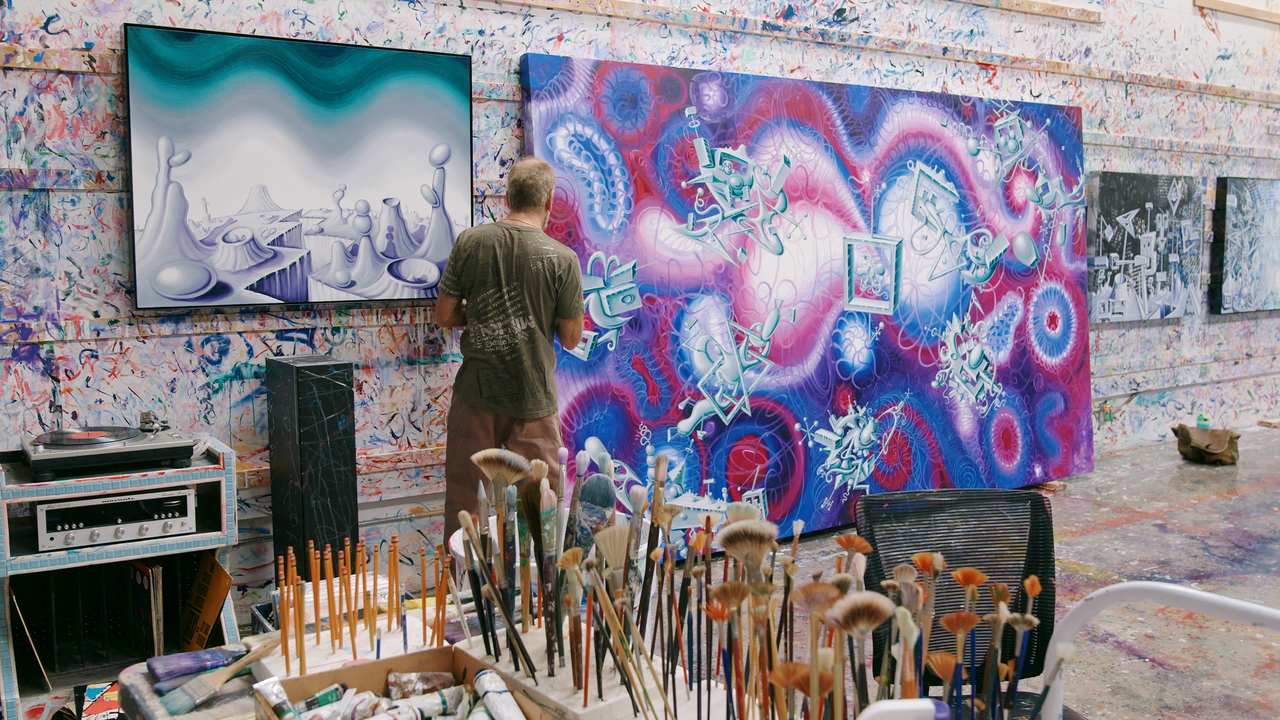Interview Magazine (1969-2018): ‘An Enduring Symbol of Downtown Cool, Even as Downtown Became Disney’
A tribute to the iconic New York journal: a platform through which founder Andy Warhol operated as artist, hustler and public intellectual
A tribute to the iconic New York journal: a platform through which founder Andy Warhol operated as artist, hustler and public intellectual

Andy Warhol would have loved the series of reader tributes to his magazine, Interview, that have circulated via Instagram in recent days – Andy could have invented the photo-sharing app – since its publisher, Brant Publications, announced the title’s imminent closure. Give #Interview a cursory scroll: Cher, Grace Jones, and Stevie Wonder in 1982, 1984, and 1986, respectively; Madonna’s infamous crotch grab, shot by Herb Ritts in 1990; Marc Jacobs styled as Warhol himself for the June/July 2008 issue. The world is ‘sooooo saaad’ (heartbreak emoji) to lose a title that had achieved proper cult status in its nearly 50 years of publication with its splashy covers, stunning fashion photography, and dishy, wildly-ranging celebrity interviews. So many people hold distinctly personal memories of this magazine, which occupies a rightful place in American pop-cultural history.
One of my own: Growing up in the northern suburbs of Pittsburgh, Pennsylvania in the 1980s, in a similar socio-ethnic position as the Warhola family, I spent endless after-school hours in the library, poring over old issues of Interview and exhibition catalogues of Warhol’s work – images and narratives whose complexity of meaning were beyond my experience and captivated my fierce little imagination. Andy was my childhood spirit animal and his magazine was a mental escape hatch from the oppressive blandness of my post-industrial town.

I interviewed with Warhol protégé and then-Brant Publications CEO, Glenn O’Brien, shortly after moving to New York in 2008 from San Francisco, where I had just finished graduate school. He signed off on my hire for what would be, for me, a brief role as Web Editor of the then newly-launched website for Interview’s sister publication, Art in America. I wore a leather jacket. We had an easy, speculative conversation about the internet and its impact on the future of publishing. O’Brien was the real deal, secure in his late-career and aware of the fact that his company’s magazines were arriving very, very late to the internet party – too late, in fact, a particularly ironic fact where Interview was concerned, given that the magazine might be rightfully considered a paper proto-chat room of sorts.
On the job, however, I wondered what futurist Andy would have thought of the company’s stuffily aspirational Broadway offices and territorial, technophobic vibe: digital staff were seated on metal folding chairs shoved up against the sorting counter of what had recently been a cramped mailroom. Even more troubling was the pervasive sense of self-conscious tension that seemed to colour that moment in time, as publishers, editors, and writers alike worried about the broader cultural effects of the web. (I recall arriving to work early one morning to a colleague’s panic over the need to Photoshop a wee trace of coke away from a party-goer’s nose, in a snapshot captured the night before at artist Terence Koh’s then-prodigious Chinatown gallery, A.S.S., before posting it to the Interview website for infinite posterity.) The markets had crashed. Reality was setting in.
O’Brien was ousted in 2009 and sued by Brant thereafter for breach of contract after speaking openly to the press about the company’s failure to pay its bills – a fact that I myself had noted as writers sent increasingly-desperate pleas for payment.

A decade later, it is sad if not outright shameful to see ‘the Crystal Ball of Pop’ allegedly drained of its resources. by a recent series of lawsuits by former employees, including long-time Interview creative director Fabien Baron, have claimed unpaid wages. Meanwhile creative director Karl Templer faces harassment charges following a Boston Globe investigation – he left the publication in April. Interview’s closure appears to have been a bottom-line business decision made by its ever-entrenched owner, Peter Brant, who acquired the book in 1989 from the then newly-established Warhol Foundation. Brant is an inveterate collector of Warhol’s work – an insider’s insider. He should know better.
Yet, his ultimate decision to fold Interview speaks to a particular kind of blindness Brant exhibits toward what marketing professionals would deem the brand perception of his companies – a distinct lack of intuition about the enduring value of Interview’s cultural capital. In other words: Interview was the coolest thing Brant Publications has ever done, by far.
If there is one thing the working class has always been good for, it is adding a sense of authenticity to otherwise-sterile or stodgy ventures – throwing a handful of glitter onto a blank canvas, if you will. Warhol wrote the book on this social phenomenon. Delightful in its vulgarity, Interview was the book.
Magazines are about readerships and publics – actual and imagined. In its most ideal form, a magazine is a community whose interests are represented through the collective thinking of those who publish, edit, and write it. Interview certainly was, for a time: a platform through which Warhol operated as an artist, a hustler, and a public intellectual; a place to collect and assemble people, conversations, ideas, and images. An enduring symbol of downtown cool, even as downtown became Disney – an idea.

Perhaps more importantly, however, is the way in which magazines function as sites of aspirational identity formation – places where readers’ imaginations are transfixed by representations of realities that eclipse their own. Reading a magazine is an act of self-identification through text and image that transcends time, place, and class.
Time moves forward, and yet it stands still. Some are suggesting that Peter Brant return his property to its rightful steward, the Warhol Foundation, a move that I suspect could slow and stifle its latent potential – a cash acquisition by a fashion-centric media company seems sadly more likely. Nostalgia and desire are powerful emotions – the driving forces behind all manners of human behaviour. A magazine, however, can be anything. What if Interview – the magazine-as-idea – were to become something else entirely in the future? It could be.
Main image: Bob Colacello, Jerry Hall, Andy Warhol, Debbie Harry, Truman Capote, Paloma Picasso at a Studio 54 party for Interview magazine. Courtesy: Getty Images; photograph: Robin Platzer























